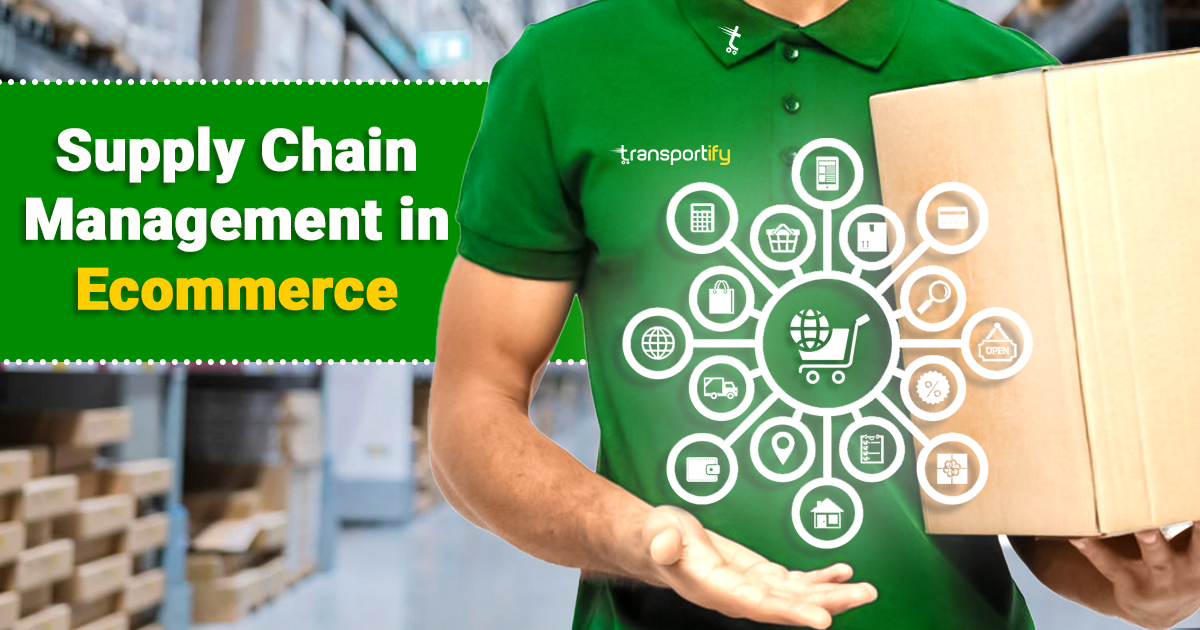
Supply chain management in ecommerce is the process of moving goods from the point of origin to the end of consumption. In a traditional supply chain, goods are produced by manufacturers and sold through brick-and-mortar stores. However, in an ecommerce supply chain, goods are produced and sold online.
What Are the Differences Between Ecommerce and Traditional Supply Chain?
There are several key differences between ecommerce supply chains and traditional supply chains.
Ecommerce Supply Chains Have Shorter Processes
First, ecommerce supply chains are often shorter and more efficient than traditional ones. This is because manufacturers can sell directly to consumers without going through brick-and-mortar stores.
Ecommerce Supply Chains Have Lower Inventory Levels
Second, ecommerce supply chains have lower inventory levels than traditional supply chains. This is because goods can be shipped directly from the manufacturers to the consumers without being stored in physical retail locations.
Ecommerce Supply Chains Are More Flexible
Finally, ecommerce supply chains are more flexible than traditional supply chains. This is because manufacturers can quickly adjust their production levels to meet changing consumer demand.
As a result of these advantages, ecommerce has been growing rapidly in recent years. According to Shopify, in 2018, global ecommerce sales reached $2.8 trillion and are projected to grow to $8.1 trillion by 2026.
The Challenges of Supply Chain Management in Ecommerce
Anyone who has ever run an ecommerce business knows that supply chain management can be a real challenge. There are many moving parts, and it can be difficult to track everything. In addition, ecommerce businesses often have to deal with different types of suppliers, including manufacturers, wholesalers, and drop shippers. Every kind of supplier has its strengths and weaknesses, and ecommerce business owners need to carefully consider each before making a decision.
However, by carefully planning and managing the supply chain, ecommerce businesses can overcome these challenges and ensure that their products are delivered on time and in good condition.
What Are the Benefits of Last Mile Delivery Route Optimization
The last mile delivery route optimization is a process of planning the most efficient route for a delivery driver to take when making multiple stops. The goal is to minimize the time and distance traveled while making all required stops. Optimizing last mile delivery is ideal for the overall supply chain operations.
Save on fuel costs
There are several benefits of last mile delivery route optimization. The most obvious benefit is that it can save the company money on fuel costs. Fuel is one of the largest expenses for a delivery company, so any opportunity to reduce fuel consumption is significant.
Faster lead times
In addition to saving money on fuel, last mile delivery route optimization can also lead to faster deliveries. By minimizing the time and distance traveled, delivery drivers, can make their stops more quickly and get back on the road sooner. This can be a major benefit for customers who are expecting a package.
Boosts safety and efficiency
Finally, last mile delivery route optimization can also help to improve driver safety. By reducing the overall mileage driven, there are fewer opportunities for accidents to occur. In addition, planners can use data from accident reports to avoid routing drivers through areas identified as particularly dangerous.
Overall, last mile delivery route optimization provides a number of significant benefits for both delivery companies and their customers. By saving money on fuel, reducing travel times, and improving driver safety, it is an essential tool for anyone involved in the delivery business.
How To Optimize Your Last Mile Delivery Routes?
The last mile of any delivery route is often the most expensive and time-consuming part of the journey. This is particularly true for businesses that deliver goods to customers within a tightly defined city center.
To optimize your last mile delivery routes, you should keep a few key considerations in mind.
- First, examine your existing routes and identify areas where you could efficiently use your resources.
- Next, consider using a mix of delivery methods, including foot- and vehicle-based options.
- Finally, use real-time data to plan and adjust your trucking routes to avoid any potential delays or disruptions.
By following these tips, you can ensure that your business makes the most efficient use of its resources and delivers its goods in the shortest possible time frame.
Case Study of A Successful Last Mile Delivery Route Optimization
There are many factors to consider when optimizing the last mile delivery route. First, you need to identify the main objectives of the optimization. For example, do you want to minimize cost, travel time, or the number of stops? Once you’ve identified your goals, you can look at different route options.
The best way to do this is to use computer software or an app to map out all possible routes and calculate the costs and travel times. Then, once you’ve selected the best route, you must implement it and monitor the results. Unfortunately, this is where many companies fail. They need the right resources to execute the new route or monitor the results closely enough.
There are many case studies of successful last mile delivery route optimizations. One company that did it well was UPS. In 2003, they implemented a new optimization software called ORION (On-Road Integrated Optimization and Navigation). This software considered many factors, including traffic, weather, and driver habits. As a result, UPS was able to save millions of dollars and reduce its carbon emissions by billions of pounds.
A successful last mile delivery route optimization requires careful planning and execution. However, the rewards can be significant in cost savings and environmental impact reduction.
Learn more about Transportify’s technology and business delivery services through the table below.
 |
SEE ALSO:
- Best Practices for Ecommerce Supply Chain Management
- Why is Last Mile Delivery Important in Supply Chain Operations?
- Importance of Logistics and Transportation in Supply Chain Management
Tips for Improving Your Ecommerce Supply Chain
Any business that wants to be successful needs to have a well-oiled supply chain. But what does that mean, exactly? In short, it means having a system for sourcing materials, manufacturing products, and delivering them to customers promptly and efficiently. Of course, optimizing your supply chain management in ecommerce is a challenging feat. But here ecommerce supply chain management best practices you can do to get started.
Assess your current operations
First, take a look at your current operations and identify any bottlenecks. These are the points in your process where things tend to slow down or get backed up. Once you know where the bottlenecks are, you can start to look for ways to streamline those operations. For example, you may need to invest in new equipment or change how you train your employees. Whatever the solution, identifying and addressing these bottlenecks will help improve your supply chain’s overall efficiency.
Adopt technological trends
Another important tip is to stay up-to-date on industry trends. This includes keeping an eye on new technologies for shipment visibility and tracking that could improve your operations and changes in customer behavior. For example, if you notice that more and more people are shopping online, you may need to adjust your supply chain to accommodate this change. By staying abreast of industry trends, you can ensure that your supply chain is always ready to meet the needs of your business – and your customers.
Adopt And Excel Today And Beyond
Ecommerce is only going to continue to grow in the coming years. As an ecommerce business, it’s important to have a solid understanding of the challenges involved in supply chain management and how to optimize your delivery routes.
Last mile delivery route optimization can be complex, but it’s worth it in terms of efficiency and cost savings. There are many different factors to consider when optimizing your ecommerce supply chain, but hopefully, these tips have given you a good starting point.
 | or |
Frequently Asked Questions:
Why is managing supply chain management in e-commerce challenging?
🚚 E-commerce has created a new landscape for the supply chain management. In the past, companies could rely on brick-and-mortar locations to move and store inventory. Today, e-commerce businesses must manage inventory across a complex network of warehouses, distribution centers, and third-party logistics providers. This can make it difficult to keep track of inventory levels and ensure that products are available when customers want them. Another challenge for e-commerce businesses is managing returns. Because customers can order products from anywhere in the world, they may need to return unsatisfied items. This can create a logistical nightmare for companies unprepared to handle returns efficiently.
What is the importance of technology in last mile delivery optimization?
🚚 There are a number of reasons why technology is important in last mile delivery optimization. Perhaps the most important reason is that technology can help to improve communication and coordination between all parties involved in a last mile delivery, from the sender to the carrier to the recipient. Good communication and coordination can help ensure that deliveries are made on time and without incident, saving both time and money. Another reason why technology is important in last mile delivery optimization is that it can help to track and monitor deliveries. This information can help improve future deliveries by, for example, identifying problem areas or making changes to the delivery route.




 INSTANT QUOTE
INSTANT QUOTE

 Chat
Chat